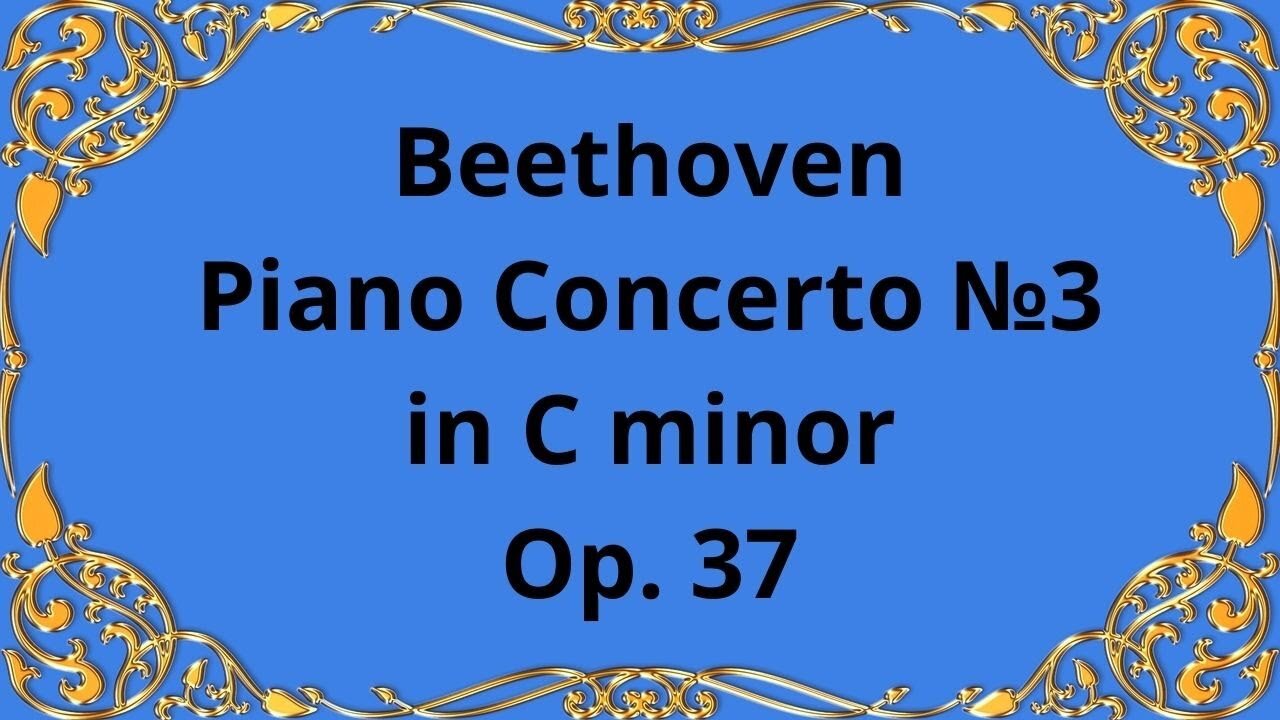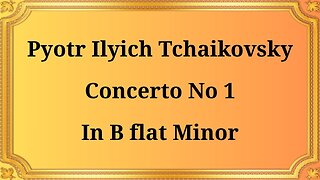Premium Only Content

Beethoven Piano Concerto No.3, in C minor Op.37
#Beethoven #Piano_Concerto #classical_music
Ludwig van Beethoven's Piano Concerto No. 3 in C minor, Op. 37, is a masterpiece of the piano concerto genre and is considered one of the greatest works in the classical music repertoire. Composed between 1800 and 1803, the work showcases Beethoven's exceptional skill as a composer and pianist, and is renowned for its virtuosic piano part, dramatic musicality, and innovative use of musical form.
The Piano Concerto No. 3 is composed of three movements: Allegro con brio, Largo, and Rondo: Allegro. The first movement is a dramatic and intense opening, with the piano and orchestra engaging in a powerful musical dialogue that sets the tone for the entire work. The second movement, Largo, is a slow and lyrical movement, featuring a delicate and expressive piano solo that is set against a haunting orchestral accompaniment. The final movement, Rondo: Allegro, is a fast and lively movement, with a playful and upbeat piano part that is supported by the orchestra.
One of the most notable features of the Piano Concerto No. 3 is Beethoven's innovative use of musical form. While the work follows the traditional three-movement structure of a piano concerto, Beethoven deviates from the norm by integrating the first and second movements, creating a seamless transition between the two. This integration creates a sense of continuity and fluidity between the movements, giving the work a unique and innovative character.
Another notable aspect of the Piano Concerto No. 3 is the way in which Beethoven showcases his skill as a composer and pianist. The piano part is virtuosic and demanding, with complex runs, trills, and arpeggios that require exceptional technical skill and musicianship. Beethoven himself was a renowned pianist, and his knowledge of the instrument is evident in the way he writes for the piano in this work.
The Piano Concerto No. 3 is also notable for its use of musical drama and intensity. The work is full of contrasts, with moments of great intensity and passion followed by moments of quiet reflection and introspection. Beethoven's use of dynamic contrasts, sudden shifts in tempo, and unexpected harmonies creates a sense of musical drama that keeps the listener engaged and emotionally invested in the work.
Overall, the Piano Concerto No. 3 in C minor, Op. 37, is a groundbreaking work that showcases Beethoven's exceptional skill and mastery of musical form. Its innovative structure, virtuosic piano part, and dramatic musicality have made it a beloved and enduring work in the classical music repertoire. The Piano Concerto No. 3 is a testament to Beethoven's enduring legacy as one of the greatest composers and pianists in the history of classical music.
You have the opportunity to support the channel
https://www.donationalerts.com/r/radsiaral
-
 31:06
31:06
Classical music_Music Inspiration
27 days agoPyotr Ilyich Tchaikovsky Piano Concerto No. 1 in B-flat minor
571 -
 LIVE
LIVE
Matt Kohrs
8 hours agoMarket Open Chaos: PCE Inflation Report & Payday Friday || Live Trading
1,099 watching -
 17:35
17:35
itsSeanDaniel
29 minutes agoPro-Transgender Doctor HUMILIATED by Genius Conservative
1 -
 LIVE
LIVE
GritsGG
1 hour agoWin Streaking! Most Wins 3499+ 🧠
63 watching -
 LIVE
LIVE
Wendy Bell Radio
5 hours agoCrime is a 99/1 Issue
6,717 watching -
 LIVE
LIVE
Crypto Power Hour
2 hours ago $0.06 earnedBlockchain, The Fifth Evolution of Computing
105 watching -
 LIVE
LIVE
LFA TV
3 hours agoLFA TV ALL DAY STREAM - FRIDAY 8/29/25
4,544 watching -
 1:15:29
1:15:29
JULIE GREEN MINISTRIES
3 hours agoTHE GREAT WHITE WOLF NEXT TO YOUR PRESIDENT WILL SOON BE UNMASKED
59.4K139 -
 13:31
13:31
Adam Does Movies
20 hours ago $4.46 earnedAlien: Earth Episode 4 - Recrap
63.2K4 -
 9:02
9:02
Millionaire Mentor
18 hours agoCNN Host Left SPEECHLESS After Stephen Miller SHREDS Her Narrative
20.8K17